Disclosure: This article contains affiliate links. We may earn a commission from purchases at no extra cost to you, which helps our travel content.
The first time I stepped into Marrakech's autumn light, I was struck by how the shadows cast perfect geometric patterns across the ochre walls—a living demonstration of the mathematical principles that have guided Moroccan design for centuries. While most visitors rush through the medina's labyrinthine souks, there exists a deeper Marrakech where sacred geometry isn't just decoration but a philosophical framework, where seasonal rhythms dictate cultural practices, and where the mathematical precision of Islamic art reveals itself to those who know where to look. After five visits across different seasons, I've discovered that fall offers the perfect conditions to experience Marrakech's cultural richness—when summer's oppressive heat has subsided but winter's rains haven't yet begun. Here are seven experiences that have allowed me to connect with the authentic pulse of this remarkable city, each revealing patterns that echo my grandmother's Tohono O'odham basketry in surprisingly familiar ways.
1. Dawn Patterns at Ben Youssef Madrasa
Most guidebooks recommend visiting this 16th-century Islamic college during midday, but they're missing the mathematical miracle that happens shortly after sunrise. Arriving at 7:30 AM in late October, I found myself alone in the central courtyard as the first light filtered through the eastern lattice screens. What followed was nothing short of sacred geometry in motion—shadow patterns slowly traversing the courtyard in perfect mathematical progression, creating temporary mandalas that ancient scholars would have used to track time.
The madrasa's design isn't random aesthetics—it's applied mathematics. The ratio between the courtyard's length and width, the precise 8-fold symmetry in the central fountain, and the careful calculation of shadow angles all speak to a culture where geometry was spiritual practice. Standing there, I was reminded of similar mathematical principles I'd seen in Kyoto's temple architecture, though expressed through entirely different cultural vocabularies.
The zellige tilework here deserves special attention. Unlike Western mosaic traditions, Moroccan zellige follows strict mathematical rules where each geometric shape relates to others through precise ratios. I spent nearly an hour photographing a single panel with my travel camera, which perfectly captured the intricate details in the low morning light. The mathematical complexity becomes even more apparent when you use the zoom function to examine how patterns nest within patterns, creating fractal-like structures that predate Western understanding of fractal geometry by centuries.
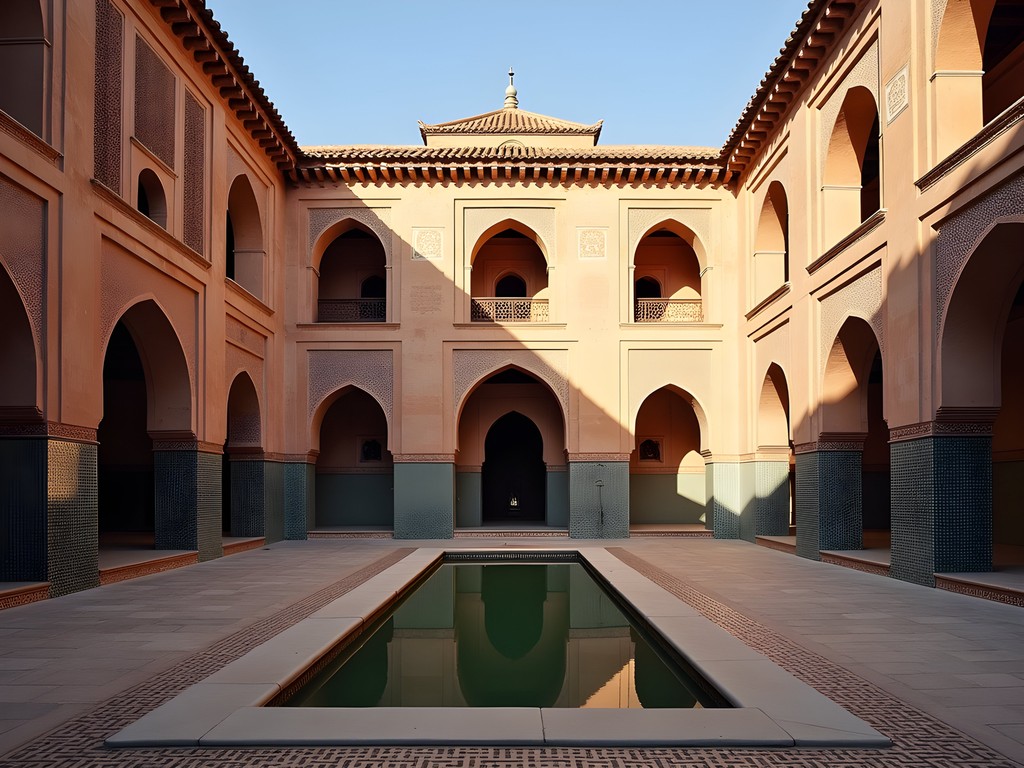
💡 Pro Tips
- Arrive before 8:00 AM to experience the morning light patterns and avoid crowds
- Bring a small notebook to sketch recurring geometric patterns—you'll start seeing them everywhere in Marrakech
- Look for the 5-fold symmetry patterns that represent the five pillars of Islam
2. The Hidden Mathematics of Bahia Palace Gardens
While tourists flock to Bahia Palace's ornate interiors, I've found that the true mathematical wonder lies in its gardens, particularly during fall when the seasonal plantings create living geometry that complements the architectural precision. The palace gardens follow what mathematicians call 'dynamic symmetry'—a system where plant placement creates harmonic proportions that change with the seasons while maintaining mathematical balance.
During my third visit to Marrakech, I was fortunate enough to meet Hassan, one of the garden's caretakers, who explained how the placement of each cypress tree, orange grove, and reflecting pool follows proportions derived from the Golden Ratio. As we walked, he demonstrated how the fall pruning maintains these sacred proportions, creating sight lines that align precisely with the palace's architectural features during specific times of day.
What fascinated me most was discovering how the garden's irrigation system—still functioning much as it did centuries ago—uses principles of fluid dynamics that Western engineers only formalized in the 19th century. The gentle slope of channels, the precise width-to-depth ratios, and the calculated flow rates all contribute to a system that maximizes water efficiency through pure mathematical elegance.
I spent a full afternoon sketching these patterns in my travel journal, which has become an essential companion for documenting geometric patterns across cultures. The acid-free paper holds up well to ink sketches and watercolor washes, allowing me to create detailed records of these mathematical discoveries that I later reference when comparing cross-cultural pattern languages.
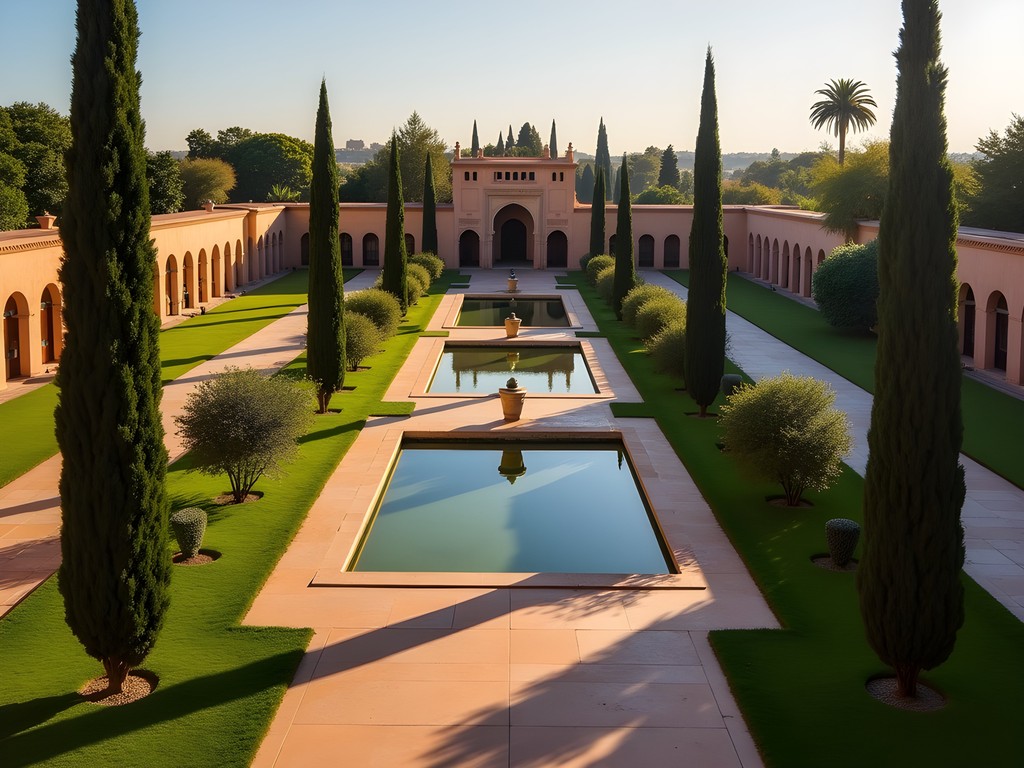
💡 Pro Tips
- Visit between 3-5 PM in fall when the light angles create the most dramatic shadows in the garden
- Ask permission to speak with the gardeners—many are repositories of traditional knowledge about geometric planting principles
- Look for the repeating 3:5:8 ratio in the garden layouts, a Fibonacci sequence that appears throughout Moroccan design
3. Seasonal Bread Rituals in the Mellah District
The Jewish Mellah district offers insights into how sacred geometry transcends religious boundaries in Moroccan culture. During fall, particularly around harvest time, the community bread ovens (farrans) become sites of mathematical precision disguised as culinary tradition. On my second visit to Marrakech, I was invited by a local family to observe their weekly bread preparation—an experience that revealed how deeply mathematical thinking permeates everyday life.
The matriarch demonstrated how the dough is divided using hand measurements based on ancient proportions, creating perfectly consistent loaves without modern measuring tools. More fascinating was the scoring pattern on each loaf—geometric designs that aren't merely decorative but serve to control how the bread expands during baking. These patterns change seasonally, with fall designs incorporating motifs that echo harvest symbols while following strict geometric principles.
The communal ovens themselves are engineering marvels that maintain precise temperature gradients through their dome-shaped design. The ratio of the dome's height to width, the placement of the fire, and the thickness of the walls all contribute to thermal efficiency that modern designers still struggle to replicate. What appears to be traditional craft reveals itself as applied physics and geometry when you understand the mathematical principles at work.
After learning about these bread-making traditions, I've found it worthwhile to bring small gifts when visiting local communities. A instant camera has proven invaluable for taking photos I can immediately give to families who share their traditions with me—creating an exchange rather than just an observation. The physical photos are always received with genuine appreciation, especially in communities where digital photos might never be shared back.

💡 Pro Tips
- Visit community bread ovens between 7-9 AM to see the most activity and seasonal variations in bread designs
- Always ask permission before photographing people or their bread making process
- Learn a few basic Arabic phrases—simple respect opens doors to authentic experiences
4. The Autumn Berber Market at Had Ourika
Just 30 kilometers from Marrakech in the Ourika Valley, the Sunday market at Had Ourika transforms during fall harvest season. Unlike the tourist-oriented souks in the medina, this weekly gathering of Berber farmers and artisans follows ancient seasonal patterns that reveal mathematical principles in everything from produce displays to textile arrangements.
On my most recent visit last October, I was struck by how vendors arrange their harvest bounty in precise geometric formations—pyramids of pomegranates with mathematically consistent spacing, circular arrays of seasonal spices that form perfect color gradients. What might seem like simple market displays are actually demonstrations of inherited knowledge about optimal packing geometries and visual harmony.
The textile section offers even more explicit examples of sacred geometry. Fall is when new wool products appear, and the Berber rugs display mathematical patterns that have remained consistent for centuries. Each motif—from simple zigzags to complex rhomboids—carries specific mathematical properties. One elderly weaver showed me how she creates perfect 60-degree angles without any measuring tools, using only traditional finger-width measurements passed down through generations.
The market's layout itself follows mathematical principles, with sections arranged in concentric circles that optimize foot traffic flow while maintaining traditional hierarchies of goods. Agricultural products occupy the outer rings, while higher-value goods like jewelry and textiles form the inner circles—a pattern that anthropologists have noted appears in markets across cultures that developed independently.
Navigating the market requires comfortable footwear, and I've found my travel shoes provide the perfect balance of support and comfort for these long market explorations. The waterproof feature has proven especially valuable during unexpected autumn showers, while the vibram soles offer needed traction on the sometimes muddy market grounds.

💡 Pro Tips
- Arrive early (before 9 AM) to witness the mathematical precision of vendors setting up their displays
- Bring small denominations of dirham for purchases, as vendors rarely have change for large bills
- Ask permission before photographing the geometric arrangements of goods—most vendors appreciate interest in their display techniques
5. Autumn Equinox at Menara Gardens
The Menara Gardens, with their central pavilion and reflecting pool, are often dismissed as a simple picnic spot. Yet during my fall visits to Marrakech, I've discovered they're actually a sophisticated astronomical instrument designed around seasonal alignments. The pavilion and pool create precise sight lines that align with the autumn equinox, making late September an ideal time to witness this mathematical marvel in action.
On the equinox, the morning sun reflects off the pool at an angle that illuminates specific architectural elements of the pavilion. This isn't coincidence but deliberate design—the pool's dimensions and orientation were calculated to create these alignments during astronomically significant dates. Similar mathematical principles govern the olive grove plantings, which are spaced according to geometric progressions that optimize irrigation while creating harmonious visual proportions.
What fascinates me as someone who studies patterns across cultures is how similar astronomical alignments appear in structures I've documented in Oaxaca and Kyoto—evidence that diverse civilizations independently discovered the same mathematical truths and encoded them in architecture. The Menara Gardens' designers understood the mathematics of seasonal light in ways that parallel other traditions half a world away.
The gardens become particularly beautiful in autumn as the olive trees prepare for harvest and the Atlas Mountains—visible across the reflecting pool—receive their first dusting of snow. The mathematical harmony between the pavilion proportions and the mountain backdrop becomes most apparent during the golden hour, when shadows lengthen according to precise geometric progressions.
For photography enthusiasts, I recommend bringing a polarizing filter to capture the reflections in the pool with maximum clarity. The filter eliminates surface glare, revealing the mathematical precision of the reflections that align with architectural features—a phenomenon that's particularly striking during the equinox period.
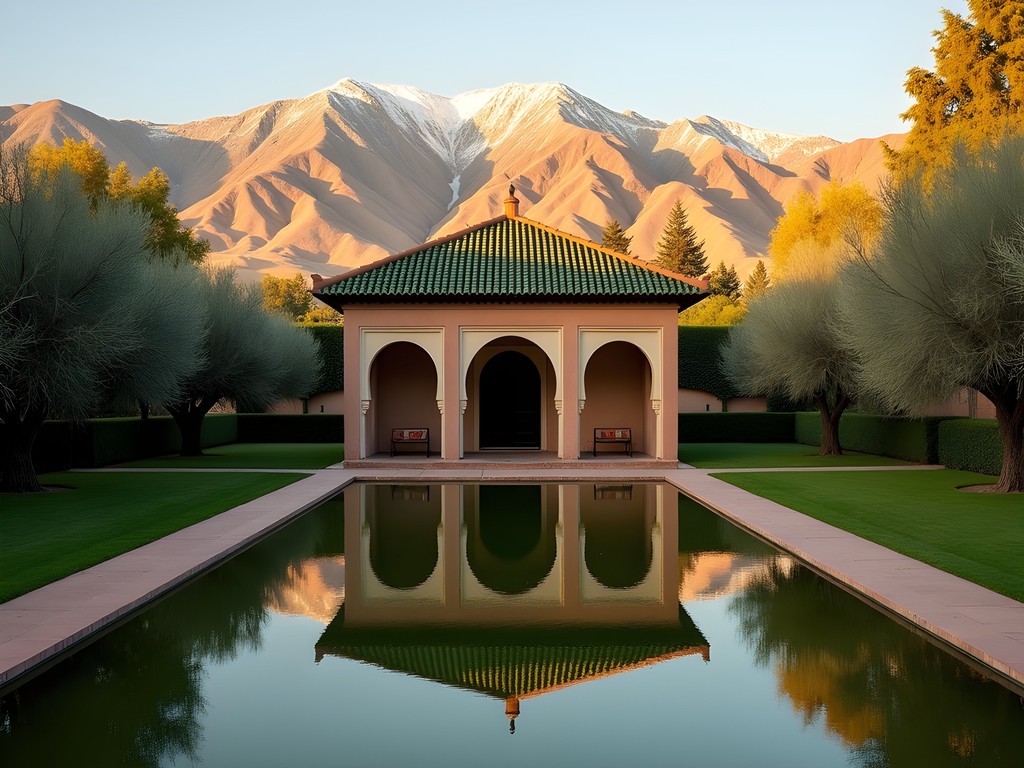
💡 Pro Tips
- Visit at sunrise during the autumn equinox (September 22-23) to witness the alignment of light with architectural features
- Bring binoculars to observe the mathematical spacing of olive trees from the pavilion's upper level
- Walk the full perimeter of the pool to identify how different viewing angles create intentional geometric alignments with the Atlas Mountains
6. Mathematical Street Art in Gueliz
While Marrakech's traditional sacred geometry is well documented, few visitors discover how these mathematical traditions are being reinterpreted by contemporary artists in the Gueliz district. During my most recent fall visit, I spent three days exploring the evolving street art scene, where modern Moroccan artists are creating murals that blend traditional geometric principles with contemporary urban aesthetics.
The M Avenue area has become particularly rich with works that reinterpret zellige patterns through modern sensibilities. Artist collective Zbel Manifesto creates large-scale murals where traditional 8-fold symmetry patterns gradually transform into contemporary social commentary. What appears decorative reveals deeper mathematical structure when you analyze the geometric transformations taking place across these massive works.
What struck me most powerfully was discovering how these artists are using the same mathematical principles I've documented in traditional crafts, but applying them to address contemporary issues like environmental sustainability and cultural preservation. One remarkable mural near Rue de la Liberté uses traditional geometric progressions to visualize data about climate change impacts on traditional Moroccan agricultural cycles.
The fall season brings ideal conditions for street art viewing, with mild temperatures and clear light that reveals the mathematical precision in these works. Many pieces incorporate seasonal elements that respond to autumn light conditions, with shadows becoming part of the geometric composition during specific hours—another example of how mathematical awareness permeates Moroccan creative expression across generations.
The neighborhood has several excellent cafés where you can reflect on these mathematical connections. I particularly recommend Café du Livre, where the interior design itself incorporates subtle geometric patterns that echo both traditional motifs and contemporary street art styles found throughout the district.
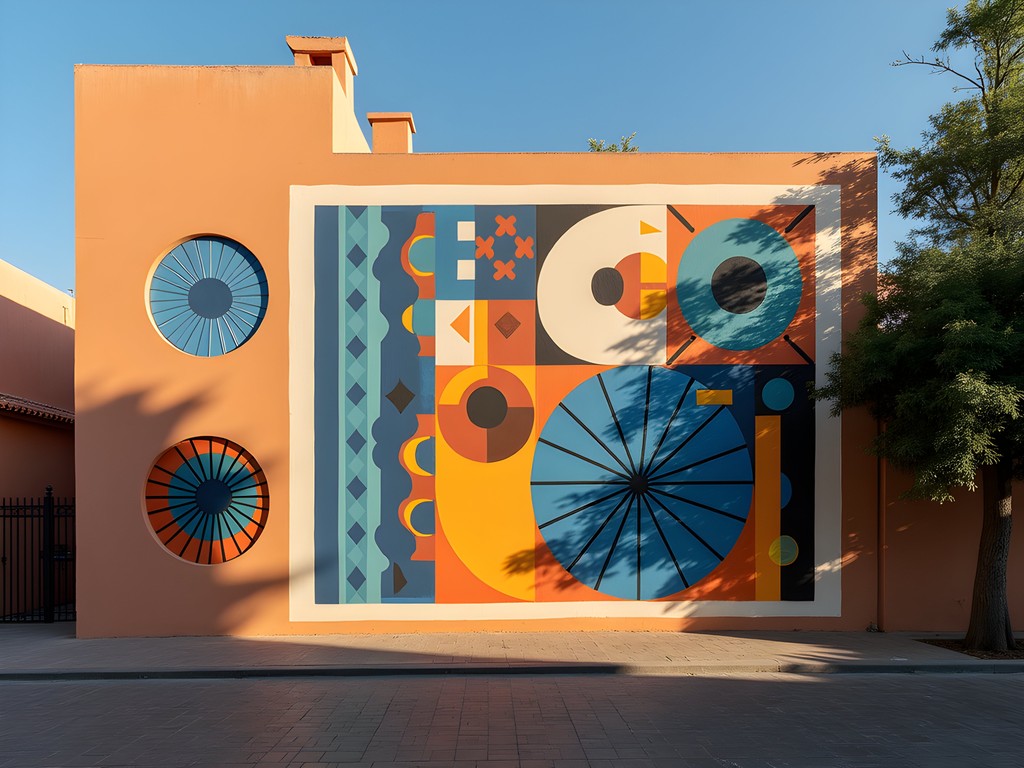
💡 Pro Tips
- Download the free Gueliz Street Art Map app to find mathematically significant murals that aren't in guidebooks
- Visit between 3-5 PM when afternoon light creates the most dramatic shadows across the textured murals
- Look for recurring mathematical ratios (particularly the 1:1.618 golden ratio) that connect traditional and contemporary geometric expressions
7. Autumn Gnawa Ceremonies and Musical Mathematics
Perhaps the most profound mathematical experience I've had in Marrakech came through sound rather than sight. Fall marks the beginning of the traditional Gnawa ceremonial season, when this ancient musical tradition becomes more accessible to respectful visitors. What initially appears to be simply hypnotic music reveals itself, upon deeper listening, as sophisticated mathematical structures expressed through rhythm and harmony.
During my second autumn visit to Marrakech, I was fortunate to be invited to a lila ceremony in the Kasbah district by a local musician I'd met while sketching geometric patterns at a café. The ceremony, which began after sunset and continued until dawn, demonstrated how Gnawa musicians use polyrhythms built on mathematical relationships between prime numbers—creating complex patterns that mathematicians would recognize as expressions of group theory and modular arithmetic.
The krakebs (metal castanets) establish base patterns in groups of 3, while the hajhuj (bass lute) creates cycles of 7 beats, creating mathematical phase relationships that repeat only after 21 beats—a mathematical structure similar to what I've documented in Kyoto's traditional gagaku court music, despite the traditions developing independently.
Most fascinating was how the dancers' movements traced geometric patterns that corresponded precisely to these mathematical sound structures—their feet marking out geometric shapes while their spinning created temporal measurements in perfect proportion to the musical cycles. The mathematical relationship between movement, sound, and healing intention in these ceremonies reveals a sophisticated understanding of pattern languages that transcends cultural boundaries.
While formal ceremonies require personal connections to attend, visitors can experience elements of this tradition at Djemaa el-Fna square, where Gnawa musicians perform abbreviated versions during evening hours. To truly appreciate the mathematical subtleties, I recommend bringing a digital audio recorder to capture performances for later analysis. The recorder's directional microphones excel at isolating specific instruments even in noisy environments, allowing you to later identify the mathematical relationships between different rhythmic patterns.
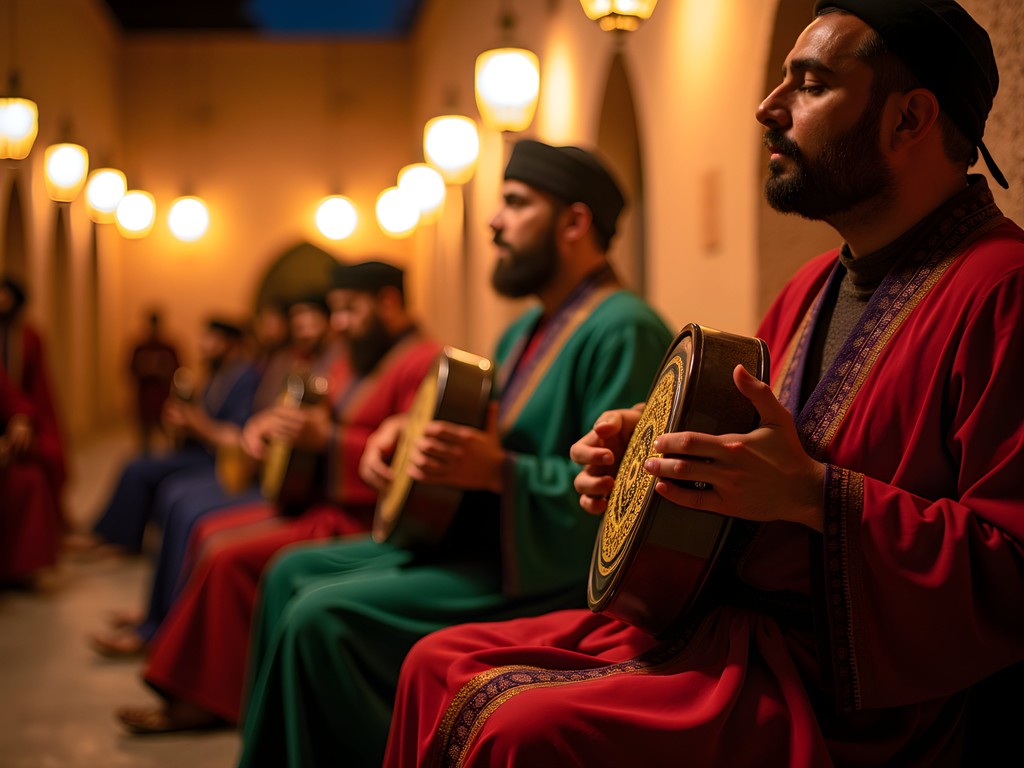
💡 Pro Tips
- Approach Gnawa musicians with respect—if you show genuine interest in the mathematical aspects of the music, they may share insights about rhythmic structures
- Count the rhythmic cycles in groups of prime numbers (3, 5, 7) to identify the mathematical patterns underlying the seemingly simple repetitions
- Visit Djemaa el-Fna square around 9 PM when Gnawa performers typically begin their evening sessions
Final Thoughts
As I sit on my riad rooftop on my final evening in Marrakech, watching autumn's golden light transform the cityscape into a canvas of mathematical precision, I'm struck by how sacred geometry here isn't academic theory but lived experience. From the bread scoring patterns in the Mellah to the contemporary street art of Gueliz, mathematical thinking forms an unbroken thread through Moroccan cultural expression across centuries. What makes fall the ideal season for these discoveries is how the changing light reveals architectural intentions, how harvest traditions highlight mathematical knowledge embedded in agricultural practices, and how the mild weather invites deeper exploration beyond tourist pathways. For couples seeking connection through shared discovery, Marrakech in autumn offers a unique opportunity to witness how mathematics becomes beauty becomes meaning—a pattern language that speaks across cultural boundaries to our shared humanity.
✨ Key Takeaways
- Visit Ben Youssef Madrasa at sunrise to witness sacred geometry in motion through shadow patterns
- Explore seasonal markets like Had Ourika to observe mathematical principles in traditional display techniques
- Time your visit around the autumn equinox to experience intentional astronomical alignments at sites like Menara Gardens
- Look beyond traditional sites to discover how mathematical traditions continue in contemporary expressions like Gueliz street art
📋 Practical Information
Best Time to Visit
Mid-September through early November
Budget Estimate
$75-150 per day per person (excluding flights)
Recommended Duration
7-10 days
Difficulty Level
Moderate

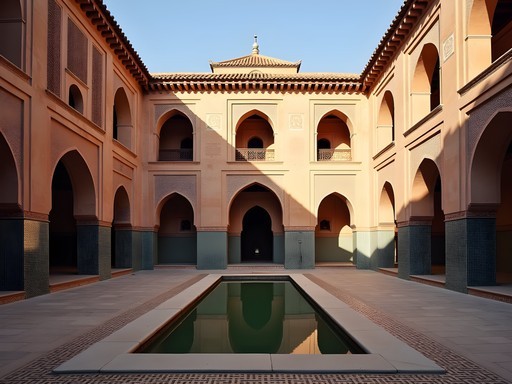







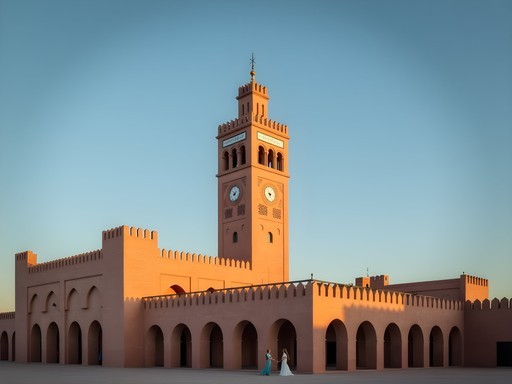
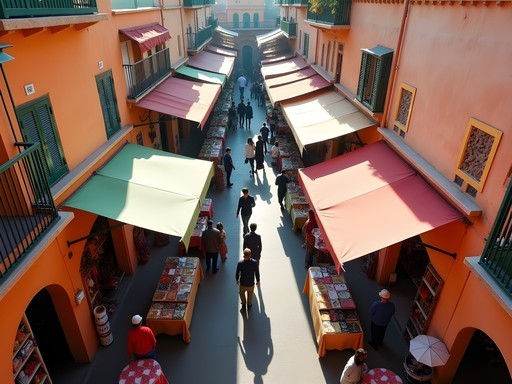
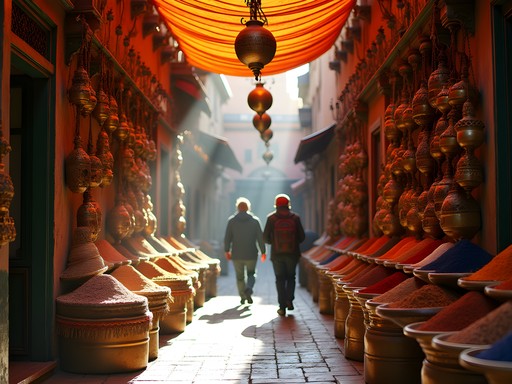
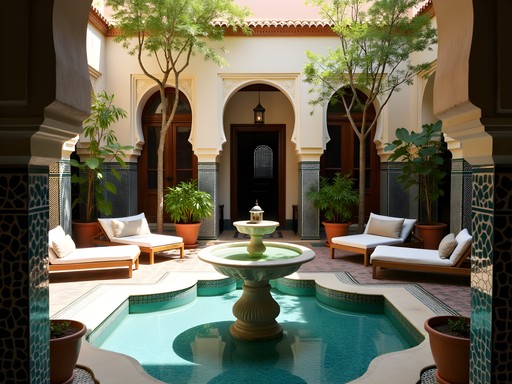

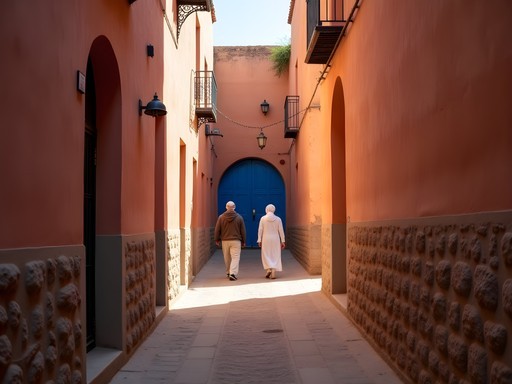


Comments
oceanrider
Those bread rituals sound fascinating! Anyone know which days they happen in the Mellah District?
coffeediver
Going to Marrakech in December - will the autumn light patterns still be visible then or is it a seasonal thing?
Savannah Walker
@coffeediver The light is different in winter but still beautiful! The sun sits lower in the sky so you get longer shadows and more dramatic patterns. December is actually less crowded too.
smartdiver
Just got back from Marrakech last week and wish I'd read this before going! We did manage to catch the Berber market at Had Ourika by pure luck - it was absolutely worth the trip outside the city. The spice displays alone were worth photographing for hours. One tip for anyone heading there: we hired a local guide through our riad who explained all the seasonal produce and traditional crafts that we would've completely missed context on. I used my pocket translator to chat with some of the older vendors who only spoke Berber dialects - they were delighted when I could communicate even a little bit!
coffeediver
How far is Had Ourika from the city center? Wondering if it's doable as a half-day trip?
smartdiver
@coffeediver It's about 35-40 minutes by car. Definitely doable as a half day trip, but I'd recommend giving yourself at least 3 hours at the market itself!
adventurebuddy
Those geometric patterns are INCREDIBLE! Adding the Ben Youssef Madrasa to my must-see list for sure!
Savannah Walker
Corey, your piece transported me right back to Marrakech! I spent three weeks there last year and completely missed the seasonal bread rituals in the Mellah District. It's amazing how the mathematical patterns are woven into every aspect of the city - from the architecture to the garden layouts. The Ben Youssef Madrasa at dawn is truly magical - I'd recommend going right when they open before the tour groups arrive. Did you get a chance to visit any of the community hammams rather than the tourist ones? The locals showed me one near Bab Doukkala that was such an authentic experience.
oceanrider
Savannah - which hammam near Bab Doukkala? I'm heading there next month and would love to try it!
Savannah Walker
@oceanrider It was called Hammam Dar el-Bacha. Very local, very authentic - bring your own soap and scrub mitt. They'll show you the ropes if you're new to hammams!
sunsetone3430
Anyone know if the Berber market at Had Ourika still happens in December? Planning a trip then and would love to experience it!
islandpro
Was there last December - it definitely runs year-round but the winter version has different seasonal goods. Lots of preserved foods and wool products. Still authentic and worth the trip!
sunsetone3430
Perfect, thanks for the info!
islandpro
Just got back from Marrakech and wish I'd seen this post before going! We completely missed the Mellah district bread rituals. Did manage to catch sunrise at Ben Youssef Madrasa though and you're right about those light patterns - absolutely mesmerizing. Got some of my best photos there. The security guard even showed us some hidden corners where the light hits differently.
Corey Black
Those security guards are treasure troves of knowledge! Glad you got to experience the morning light there.
Riley Griffin
We took our kids (11 and 14) to Marrakech last fall and followed your advice about the Had Ourika market. What a difference from the tourist-packed souks! My daughter still talks about the elderly woman who showed her how to identify quality saffron by smell and texture. We found that bringing a small travel sketchbook for the kids to draw the patterns they saw throughout the day kept them engaged with the mathematical aspects of the architecture. They ended up with the most beautiful visual travel journals! The seasonal bread rituals were a highlight too - my son helped an older gentleman knead dough and came away with the biggest smile.
sunsetone3430
How did you get to Had Ourika? Is it easy with public transportation or did you hire a driver?
Riley Griffin
We hired a driver through our riad for about 600 dirham for the day. Public transport goes there but with kids we wanted flexibility to leave when they got tired. The drive itself is gorgeous - about 45 minutes through changing landscapes!
sunnyseeker
Those bread rituals sound amazing! Adding to my bucket list!
Douglas Bradley
The mathematical precision in Moroccan architecture continues to fascinate me. I spent three days analyzing the tessellation patterns at Ben Youssef Madrasa last year and discovered how the Islamic geometric patterns represent infinity through repetition. Your observation about the autumn light creating additional layers of patterns is spot on. I'd add that visiting the School of Visual Arts' weekly geometry workshops (not mentioned in tourist guides) offers insights into how these patterns are drafted using only compass and straightedge. They're held every Thursday afternoon in a small studio near Bahia Palace.
Venture X
Premium card with 2X miles, $300 travel credit, Priority Pass